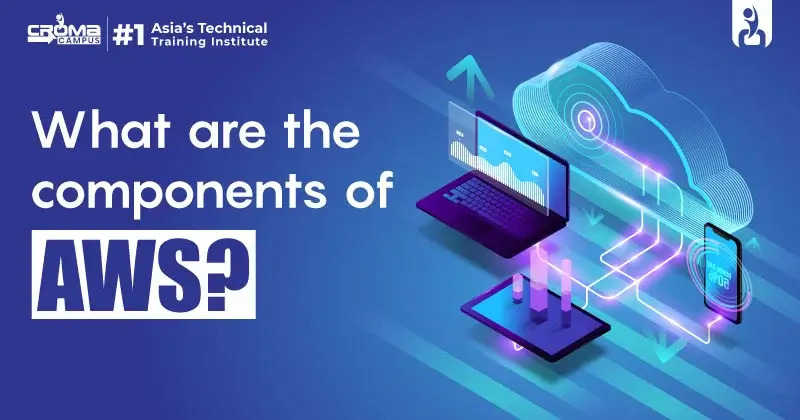Introduction
In the world of Amazon Web Services (AWS), innovation meets scalability in the cloud. AWS provides a vast array of services designed to help businesses of all sizes transform and thrive in today’s digital landscape. From virtual computing with EC2 to secure storage with S3, AWS offers easy-to-use components that empower organizations to build, deploy, and manage applications with unprecedented flexibility and efficiency.
In this guide, we’ll delve into some of the most important AWS Components, exploring their functionalities and illustrating how they drive success for businesses around the globe.
Important AWS Components
Amazon Web Services (AWS) encompasses a wide range of components and services, including Elastic Compute Cloud (EC2) for virtual computing, Simple Storage Service (S3) for scalable storage, Relational Database Service (RDS) for managed databases, Lambda for serverless computing, Virtual Private Cloud (VPC) for network isolation, Route 53 for domain name system (DNS), CloudWatch for monitoring, Identity and Access Management (IAM) for security, Simple Queue Service (SQS) for messaging, and Elastic Container Service (ECS) for container management, among others.
Let’s take a look at some of the most important components of Amazon Web Services (AWS).
1. Amazon EC2 (Elastic Compute Cloud)
EC2 provides resizable compute capacity in the cloud. It allows users to quickly scale computing resources up or down as needed, making it ideal for hosting websites, running applications, and performing various computing tasks.
2. Amazon S3 (Simple Storage Service)
S3 is a scalable object storage service designed to store and retrieve any amount of data from anywhere on the web. It is commonly used for backup and recovery, data archiving, content distribution, and hosting static websites.
3. Amazon RDS (Relational Database Service)
RDS makes it easy to set up, operate, and scale relational databases in the cloud. It supports multiple database engines such as MySQL, PostgreSQL, SQL Server, and Oracle, allowing users to choose the one that best fits their needs.
4. Amazon VPC (Virtual Private Cloud)
VPC enables users to create a logically isolated section of the AWS cloud where they can launch AWS resources in a virtual network. It provides control over network configuration, including IP address range, subnets, routing tables, and security settings.
5. Amazon IAM (Identity and Access Management)
IAM helps users securely control access to AWS services and resources. It allows them to create and manage users, groups, and permissions, ensuring that only authorized individuals can access sensitive data and perform specific actions.
6. Amazon Route 53
Route 53 is a scalable domain name system (DNS) web service designed to route users to internet applications by translating human-readable domain names into IP addresses. It also provides domain registration and health checking capabilities.
7. Amazon SQS (Simple Queue Service)
SQS is a fully managed message queuing service that enables decoupling and scaling of distributed systems. It allows messages to be sent between applications without losing them and ensures that they are processed in a reliable and timely manner.
8. Amazon Lambda
Lambda is a serverless computing service that runs code in response to events and automatically scales to accommodate demand. It allows users to execute code without provisioning or managing servers, making it ideal for building event-driven and microservices architectures.
9. Amazon CloudWatch
CloudWatch is a monitoring and observability service that provides real-time insights into AWS resources and applications. It collects and tracks metrics, logs, and events, allowing users to gain visibility into system performance, troubleshoot issues, and automate responses.
10. Amazon ECS (Elastic Container Service)
ECS is a highly scalable container orchestration service that allows users to run, stop, and manage Docker containers on a cluster of EC2 instances. It simplifies the deployment and management of containerized applications, making it easier to build and scale microservices architectures.
These are just a few of the many components that make up AWS. Each plays a crucial role in helping businesses of all sizes innovate and scale in the cloud. One can join AWS Training In Bangalore to learn using these ital. AWS components easily.
Conclusion
To sum up, Amazon Web Services (AWS) offers a comprehensive suite of services that empower businesses to innovate, scale, and thrive in the digital age. With its easy-to-use components like EC2, S3, and Lambda, AWS continues to revolutionize the way organizations build and deploy applications in the cloud.

